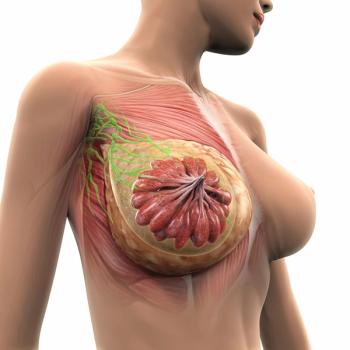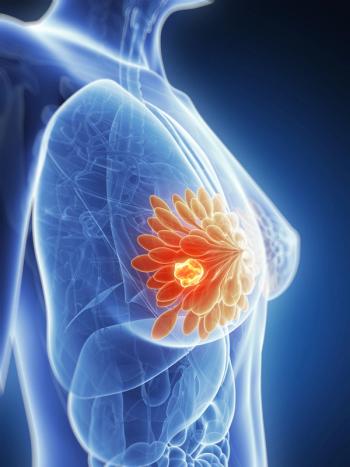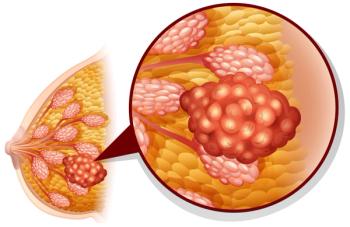
Increased Healthcare Costs and Unmet Needs Identified in Triple-Class Exposed R/R Multiple Myeloma

A real-world study found patients with relapsed/refractory multiple myeloma who were triple-class exposed had higher healthcare costs and unmet treatment needs.
Patients with triple-class exposed relapsed/refractory multiple myeloma who have received short-term heterogenous treatments are more likely to have higher healthcare costs and unmet medical needs, according to a study published in Future Medicine.
The median time from diagnosis to the new line of therapy was 41.0 months, and the median follow-up time was 6.2 months. The estimated median time to treatment discontinuation of 4.2 months. Investigators determined that the mean per-patient per-month multiple myeloma–related cost was $35,657 (95% CI, $32,104-$39,210). The most common treatment regimens were immunomodulatory drugs plus daratumumab (Darzalex; 18.2%), lenalidomide (Revlimid) or pomalidomide (Pomalyst) plus proteasome inhibitors (15.6%) including pomalidomide/carfilzomib (9.1%), and immunomodulatory monotherapy (11.0%), mostly pomalidomide (7.1%).
“This is the first study to describe [healthcare recurrence utilization] and healthcare costs associated with treatment of triple-class exposed patients with [relapsed/refractory multiple myeloma] in the US. The results of this study suggest that these patients have relatively poor outcomes despite receiving a diverse and relatively costly set of treatments, of which the most frequently used were combinations of immunomodulatory drugs with daratumumab,” investigators of the study wrote.
A total of 154 patients were included in the analysis and began a new line of therapy after having been triple-class exposed. Patients had a median age of 62 years, and 37% had autologous stem cell transplant (ASCT) prior to index date. The mean number lines of therapy before receiving new lines of therapy were 3.6 months.
The mean all-cause hospitalization was 0.18 per-patient per-month (PPPM; 95% CI, 0.14-0.21), and the inpatient days were 1.44 (95% CI, 0.93-1.94) PPPM. The mean number of multiple myeloma–related hospital-related stays was 0.17 PPPM (95% CI, 0.14-0.21), and inpatients days were 1.43 (95% CI, 0.92-1.93) PPPM.
The mean all-cause total cost was $37,033 USD PPPM (95% CI, $33,454-$40,612); 96% of costs were related to myeloma treatment. Regardless of whether treatment was inpatient or outpatient, the mean cost PPPM with multiple myeloma treatment and administration was $18,238 (95% CI, $16,126-$20,350), and $1099 (95% CI, $728-$1470), respectfully.
The mean cost of ASCT was $364 (95% CI, $0-$906) PPPM. Two patients underwent ASCT during the index line of therapy, and the mean cost was $31,217. Investigators also reported that the mean cost of adverse effects and multiple myeloma–related complications was $10,278 (95% CI, $7754-$12,803) PPPM, and other services excluding treatment, administration, ASCT, and complications resulted in a mean cost of $5677 (95% CI, $4296-$7058). Overall, the mean in-patient cost was $8095 (95% CI, $5370-$10,820) and outpatient service cost was $19,429 (95% CI, $16,930-$21,928) per-patient per-month.
At 3 months, the expected total multiple myeloma–related healthcare cost per-patient was $122,400 (95% CI, $106,523-$140,081), at 6 months it was $201,603 (95% CI, $179,680-$224,231), at 9 months it was $273,438 (95% CI, $243,028-$303,727), and at 12 months it was $329,390 (95% CI, 286,694-375,060). Investigators noted that these estimates were based upon patients who were remaining on a health plan.
“Patients with [relapsed/refractory multiple myeloma] and triple-class exposure represent a small and difficult-to-treat patient population who receive heterogeneous treatment regimens, with no clear standard of care. The development of new agents is crucial to the management of this triple-class exposed patient population who experience a short duration of treatment and time to next therapy with high healthcare recurrence utilization] and costs in the US,” investigators concluded.
Reference
Madduri D, Hagiwara M, Parikh K, et al. Real-world treatment patterns, healthcare use and costs in triple-class exposed relapsed and refractory multiple myeloma patients in the USA. Future Oncol. 2021;17(5):503-515. doi:10.2217/fon-2020-1003
Newsletter
Stay up to date on recent advances in the multidisciplinary approach to cancer.





















































































